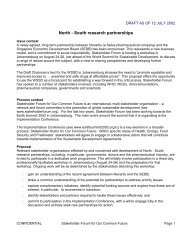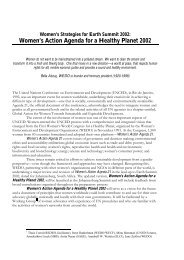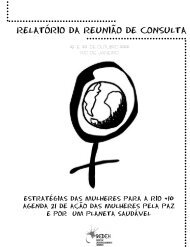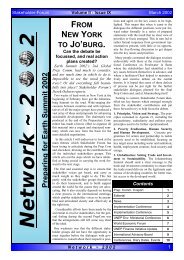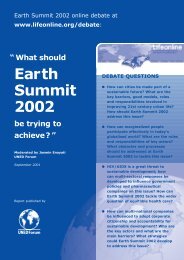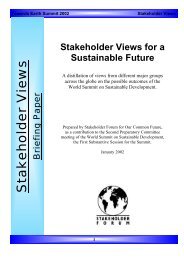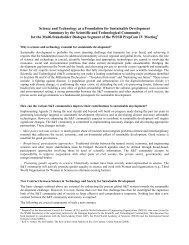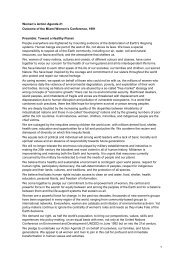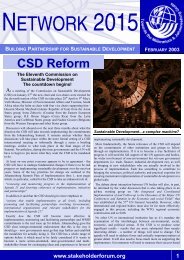How to use the Public Transport Gender Audit Checklist
How to use the Public Transport Gender Audit Checklist
How to use the Public Transport Gender Audit Checklist
Create successful ePaper yourself
Turn your PDF publications into a flip-book with our unique Google optimized e-Paper software.
<strong>the</strong>m from using it. There does however appear <strong>to</strong> be a significant reduction in actual as opposed <strong>to</strong>desired journeys for social and recreational purposes, particularly in <strong>the</strong> evening and more so amongwomen with caring responsibilities and those in older age groups. Examples of what may be termed‘imperatives <strong>to</strong> car <strong>use</strong>’, were evident and <strong>the</strong>se were of two kinds: first, strong concerns about personalsecurity, for example; and second, <strong>the</strong> need <strong>to</strong> ensure safe travel <strong>to</strong> school for one’s children. 28Costs and inconvenience associated with children’s journeys <strong>to</strong> school were also major concerns, butsafety was paramount:Although car ownership and <strong>use</strong> are on <strong>the</strong> increase among women, <strong>the</strong>re is still an important marketfor public transport among women. There are many pressures <strong>to</strong> get and <strong>use</strong> a car, but researchamong women indicates that cars are also perceived <strong>to</strong> have a range of disadvantages and limitationsthat o<strong>the</strong>r competing modes have ei<strong>the</strong>r low availability, high costs or low attractiveness for women,and that for <strong>the</strong> great majority cycling and mo<strong>to</strong>rbike cycle <strong>use</strong> are hardly seen as options at all. Formany women, walking is still probably <strong>the</strong> most viable option for shorter journeys. <strong>How</strong>ever, risingrates of crimes against <strong>the</strong> person does nothing <strong>to</strong> allay women’s concerns about personal security.Additionally, often hazardous pedestrian environments and <strong>the</strong> encumbered nature of many ofwomen’s journeys lessen <strong>the</strong> attractiveness of walking. There remains a strong need for some formof mo<strong>to</strong>rised non-private transport in keeping with transport and sustainability criteria <strong>to</strong> meet women’stravel needs. 29In conclusion, <strong>the</strong> failure <strong>to</strong> produce transport policies and provision that meet women's needs hasexacerbated social exclusion and environmental pollution. Much more research needs <strong>to</strong> be undertaken<strong>to</strong> provide a clearer picture of women's lives, <strong>the</strong>ir domestic and family responsibilities and <strong>the</strong>irpreferred work and leisure patterns, particularly at <strong>the</strong> local level.This data could <strong>the</strong>n be employed <strong>to</strong> promote greater awareness among those responsible for transportprovision of <strong>the</strong> extent of gender inequality and more importantly as material <strong>to</strong> construct a <strong>to</strong>ol <strong>to</strong>audit 30 all transport plans. A better transport future for women could <strong>the</strong>n be attained if all policy andplans were audited for gender sensitivity.10




